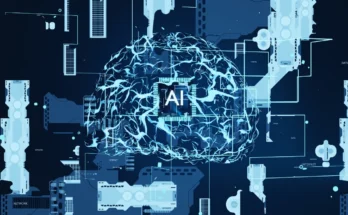Artificial intelligence (AI) is transforming industries, revolutionizing workflows, and changing the way we interact with the world. But for all its benefits, AI carries risks that are often underappreciated. From ethical dilemmas to widespread job displacement, the risks of AI are real and have profound consequences. In this post, we’ll explore the 12 major risks of AI (artificial intelligence), providing you with the insights you need to stay informed about this rapidly advancing technology.
1. Job Displacement: The Human Cost of Automation
One of the most immediate concerns surrounding AI is its potential to displace jobs. Industries from manufacturing to finance have begun adopting AI technologies that can perform tasks traditionally done by humans. While automation increases efficiency, it threatens millions of jobs worldwide.
- A 2020 report from the World Economic Forum projected that AI would displace 85 million jobs by 2025.
- Blue-collar jobs are most vulnerable, with machines already performing tasks like assembly, packaging, and data entry more efficiently than human workers.
- White-collar jobs in industries like finance and healthcare are also at risk as AI systems become better at handling routine tasks like data analysis and report generation.
- The shift from human labor to AI-driven systems could lead to mass unemployment and socioeconomic inequality if not managed properly.
2. Ethical Dilemmas: AI and Moral Decision-Making
AI operates on data and algorithms, but can it make moral decisions? One of the most pressing ethical concerns with AI is how it will handle situations that involve moral ambiguity.
- Autonomous vehicles, for instance, might face life-or-death decisions in accidents. Should an AI-powered car prioritize the lives of its passengers or pedestrians?
- AI in law enforcement may unfairly target individuals based on biased data, raising concerns about fairness and justice.
- How should AI systems be programmed to make ethical choices when there are no clear right or wrong answers?
- Governments and companies are grappling with these questions, but finding a universally accepted solution is challenging.
3. AI Bias: The Problem of Prejudiced Algorithms
While AI is often viewed as an objective tool, it can inherit biases from the data on which it is trained. These biases can have significant consequences.
- AI systems have been found to reinforce racial, gender, and socioeconomic biases, leading to unfair treatment in various sectors like hiring, lending, and law enforcement.
- In one notable case, a facial recognition system falsely identified Black individuals as criminals at higher rates than white individuals.
- Biases in AI aren’t just a technical issue; they reflect broader societal inequalities.
- Addressing AI bias requires a deep understanding of both technology and social context to ensure fairness and justice in AI applications.
4. Loss of Privacy: AI’s Growing Data Appetite
With AI comes the need for vast amounts of data, and this creates serious privacy concerns.
- AI systems rely on data collected from users, which often includes sensitive personal information. The more data AI has, the more it can learn, but at what cost?
- From voice assistants to social media algorithms, AI applications are collecting and analyzing our data, sometimes without explicit consent.
- This data can be hacked, leaked, or misused by corporations and governments, leading to privacy violations on a massive scale.
- The ethical use of data in AI systems remains a significant challenge, with current regulations struggling to keep up with the pace of AI innovation.
5. AI and Security Threats: Cyberattacks on Steroids
AI’s capabilities aren’t just used for good—they can also be weaponized. AI-driven cyberattacks are becoming more sophisticated, posing a significant threat to global security.
- AI systems can be exploited to create more effective phishing schemes, ransomware attacks, and deepfakes.
- AI can also help hackers identify system vulnerabilities faster than ever before, making it harder for cybersecurity professionals to keep up.
- Autonomous weapons driven by AI could also be programmed for cyber warfare, potentially leading to uncontrollable conflicts.
- Governments and tech companies are investing heavily in AI security solutions, but the race between defense and offense is ongoing.
6. Deepfakes: The Rise of Fake Realities
The ability of AI to create hyper-realistic images and videos, known as deepfakes, has opened up a new frontier for misinformation.
- Deepfake videos can be used to manipulate political outcomes, spread false information, or tarnish reputations.
- The technology behind deepfakes is advancing rapidly, making it harder to distinguish between real and fake content.
- AI-generated deepfakes pose a threat to truth and trust in the media, with potentially devastating consequences for democracy.
- As detection methods improve, so do the tactics used to create even more convincing fakes.
7. Autonomous Weapons: AI in Warfare
AI’s role in warfare is growing, with autonomous weapons systems becoming more prevalent. These weapons can make decisions without human intervention, raising grave ethical and security concerns.
- Autonomous drones and robots could carry out military strikes, but who is accountable if something goes wrong?
- The use of AI in warfare could lower the threshold for conflict, making it easier for governments to engage in military actions without risking human lives.
- There’s a fear that autonomous weapons could be used in ways that violate international law, leading to war crimes or unintended escalation.
- International efforts to regulate the use of AI in warfare are underway, but consensus remains elusive.
8. Economic Inequality: The AI Divide
The unequal access to AI technologies can exacerbate global economic disparities. Wealthier countries and companies have the resources to develop and implement AI, while poorer nations and small businesses are left behind.
- Large corporations like Google, Amazon, and Microsoft have a significant advantage in AI development, leading to monopolistic control over AI innovations.
- This disparity can widen the gap between rich and poor, both within and between countries.
- If not addressed, the AI divide could lead to increased global inequality, making it harder for developing nations to compete in a tech-driven economy.
- Governments and international organizations must work together to ensure that AI benefits are shared more equally across society.
9. Lack of Accountability: Who’s Responsible?
As AI systems become more autonomous, determining accountability becomes a challenge.
- If an AI-driven car causes an accident, who is liable—the car manufacturer, the AI developer, or the owner?
- The complexity of AI systems makes it difficult to trace the origins of errors or malfunctions.
- Without clear legal frameworks, companies might avoid taking responsibility for the unintended consequences of their AI products.
- Governments and regulatory bodies need to establish robust frameworks to ensure accountability in the age of AI.
10. AI and Creativity: The End of Human Innovation?
AI is now capable of creating art, music, and even writing, raising the question: will AI surpass human creativity?
- AI-generated content can mimic human creativity, but some worry that it could lead to the erosion of human-driven innovation.
- Artists and creators fear that AI tools could flood the market with generic, algorithmically produced works, devaluing human-made art.
- However, others see AI as a tool that can enhance, not replace, human creativity by handling repetitive tasks and offering new insights.
- The key lies in striking a balance where AI supports creative professionals without overshadowing their unique contributions.
11. Singularity and AI’s Uncontrollable Growth
One of the most speculative yet serious risks is the idea of AI singularity—the point at which AI surpasses human intelligence and becomes uncontrollable.
- If AI reaches a level where it can improve itself without human input, it could lead to unpredictable consequences.
- Experts like Stephen Hawking and Elon Musk have warned about the potential dangers of AI surpassing human control.
- While this may sound like science fiction, the rapid pace of AI development makes it a possibility that cannot be ignored.
- Preparing for the singularity requires international collaboration and robust ethical guidelines to ensure AI remains aligned with human values.
12. The Environmental Impact: AI’s Carbon Footprint
Finally, AI has a significant environmental cost. Training large AI models requires immense computing power, which in turn demands significant energy consumption.
- Data centers running AI algorithms contribute to carbon emissions, exacerbating climate change.
- As AI becomes more integrated into daily life, its energy requirements will only grow, making it critical to develop more energy-efficient AI systems.
- The tech industry is starting to address this issue, with companies exploring green AI initiatives to reduce environmental harm.
- However, more work is needed to ensure that AI’s environmental impact does not outweigh its benefits.
Artificial intelligence holds immense potential, but its risks are just as significant. Understanding these risks is crucial as we navigate the future of AI. Visit Mob Technos to explore cutting-edge AI solutions that prioritize ethical practices, security, and innovation. What are your thoughts on AI’s impact? Share your insights in the comments below!
FAQ
- What are the main risks of AI?
The main risks include job displacement, ethical dilemmas, bias, loss of privacy, and security threats. - How does AI impact job markets?
AI can displace jobs by automating tasks previously done by humans, particularly in sectors like manufacturing and finance. - What are deepfakes?
Deepfakes are AI-generated videos or images that are manipulated to appear real, often used for misinformation. - Can AI be biased?
Yes, AI systems can inherit biases from the data they are trained on, leading to unfair treatment in applications like hiring and law enforcement. - Is AI environmentally friendly?
AI has a large carbon footprint due to the energy required for training complex models, but efforts are underway to develop more sustainable solutions. - What is AI singularity?
AI singularity refers to a hypothetical point when AI surpasses human intelligence, leading to unpredictable and uncontrollable outcomes. - How can AI be regulated?
AI regulation requires collaboration between governments, tech companies, and international bodies to create legal frameworks that ensure accountability and ethical practices.




